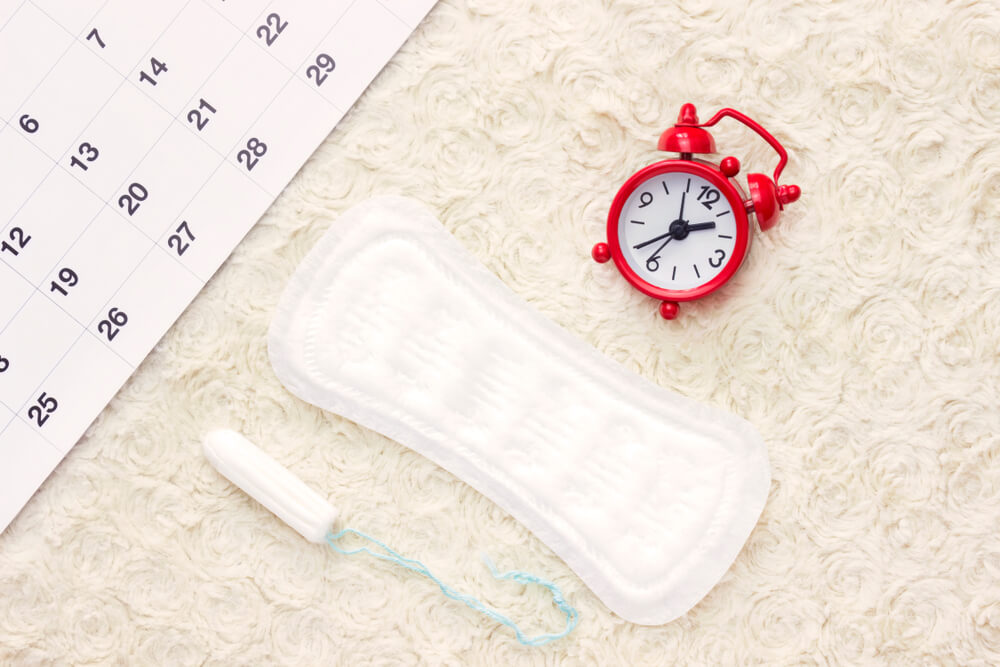Amenorrhea can be simply defined as the absence of menstruation in women. Typically, there are two types of the condition, namely:
- Primary amenorrhea is the absence of menstruation in teen girls who haven’t got their period even having reached the age, or in other cases, after three years of starting breast development.
- Secondary amenorrhea occurs in women who have had regular periods but suddenly stop having them for some reason.
Practically, neither amenorrhea type is a disease on its own. Still, these conditions often signal other problems that may need to be addressed, such as hormone imbalances, improper medication prescriptions, stress, too vigorous exercise, excessive weight loss, appetite problems, or various other issues. Because of the myriad of causes that may lead to amenorrhea, it’s essential for teen girls to see a healthcare expert, no matter whether they’ve stopped menstruating or haven’t started it yet.
In this article, the expert team at Worldwide Pediatrics discusses the primary causes and symptoms of amenorrhea and will also talk about treatment options.
And if you are looking for excellent general pediatric care in Plantation and Doral, Florida, or wish to learn more about common menstrual disorders, feel free to reach out to us.
The Main Causes of Amenorrhea

Before we get into the issues that may trigger the absence of menstruation, it’s vital to know that some girls will be a little late with starting their periods, and while they and their parents may be concerned, it’s not an issue.
Sometimes, the causes of secondary and primary amenorrhea may overlap, and the underlying causes of the menstrual disorder may be the following:
- Undiagnosed hormone imbalances such as polycystic ovary syndrome
- Problems with diabetes and high cholesterol
- Issues with their thyroid or ovaries that may require hormonal treatment
- Low levels of estrogen from vigorous exercise (athletic amenorrhea)
- Low estrogen levels due to eating problems and low weight
- Rapid weight gain
- Chron’s disease
- Sickle cell disease
- Lupus
- Celiac disease
- Cystic fibrosis
- Congenital problems of the reproductive tract
- Using certain medications
- Birth control pills and other contraceptives
- In some cases, chromosomal or genetic disorders such as Sawyer and Turner syndrome may also lead to late menstruation
Therefore, it’s evident that in most cases, hormonal problems cause the absence of menstruation. More precisely, the lack of estrogen is usually the main culprit behind menstrual disorders. Often, the lack of the hormone can lead to insufficient calcium absorption, which is essential for building strong bones, which may cause further complications in later years, especially if teen girls fail to develop the right amount of bone density.
Because of this, teen girls must be the right weight for their build, intake enough vitamin D and calcium, don’t overtrain and undereat, and have enough estrogen to build healthy bones.
Regarding amenorrhea symptoms, it’s apparent that the absence of menstruation itself is the main sign of the condition. Still, depending on what causes the problem in the first place, teenage girls may produce other amenorrhea symptoms as well, including:
- Headaches
- Acne
- The growth of excess hair
- Pain
Diagnosing and Treating Primary Amenorrhea
When scheduling an appointment at the doctor’s for menstrual problems, the doctor will mainly perform a physical exam and will ask a series of questions.
Depending on the case, the doctor may also order a pregnancy test. However, if pregnancy is out of the question, the professional may order more tests to determine the underlying cause of the absence of menstruation. These tests may include the following:
- Ultrasounds: These are imaging tests that use high-frequency sound waves to help create detailed pictures inside the body. With the help of ultrasound, doctors can better examine various organs, like the uterus and ovaries, and check for abnormalities.
- Blood tests will allow the healthcare provider to closely examine hormone levels, especially follicle-stimulating hormone, luteinizing hormone, prolactin, and all other hormonal compounds related to periods. By taking a closer look at the levels of these hormones, doctors can rule out the causes of amenorrhea.
- CT scans: These are also imaging tests that use rotating X-ray machines and computers to create a series of cross-sectional images of the human body, allowing experts to look for any irregularities in the organs and glands.
As mentioned above, the healthcare provider will ask a series of questions about health issues and lifestyle habits, weight loss, and gain patterns. They might also ask questions regarding medications, possible eating disorders, excessive hair growth, acne, and a family history of problems with amenorrhea. Naturally, they will also ask whether the teen girl is sexually active.
All in all, the healthcare expert might ask the following questions:
- When have you entered puberty and started to develop breasts?
- Have you ever experienced vaginal bleeding?
- Did you ever have your period?
- Have you lost or gained a significant amount of weight lately?
- Are you stressed or feeling depressed?
- Has anybody raised concerns about your eating habits?
- How much do your exercise?
- Do you exercise profusely to maintain your current weight?
- Do you gain weight easily?
- Do you have issues with excessive hair growth?
- Are you sexually active? If yes, do you use contraception?
- If you take any medications, what are they?
The treatment for primary amenorrhea will mostly depend on the underlying causes. Still, most issues that lead to the absence of menstruation can be easily treated with a few lifestyle changes and medication. It’s essential that both the young lady and their parents understand the importance of the impact of what’s causing these problems and address them proactively and healthily. For instance, effectively addressing the issues of eating disorders and excessive exercise may take a bit longer, and the necessary lifestyle changes might be mentally demanding on the patient. In the long run, overtraining and eating disorders can cause even more problems if left untreated.
Also, depending on what causes the problem, the doctor may suggest watchful waiting to see whether the problem resolves on its own, i.e., the menstrual cycle is simply delayed.
In the case of secondary amenorrhea, medical treatments like birth control, hormonal replacement therapy, and drugs to treat polycystic ovary syndrome may help restore the menstrual cycle.
In cases of both secondary and primary amenorrhea, doctors may even recommend surgery, most likely to treat endocrine issues, congenital anomalies, or other health issues.
Compassionate Exerts Who Understand

No matter the underlying cause, menstrual disorders can be incredibly stressful in a young lady’s life. As such, it’s vital to find a team of caring medical specialists who can help the teen effectively navigate the treatment process, avoiding even more unnecessary stress and anxiety.
We deeply understand all the concerns of these young girls and aim to provide them with expert services, stellar patient education, and compassionate care. Feel free to schedule an appointment with us if you have any concerns.



